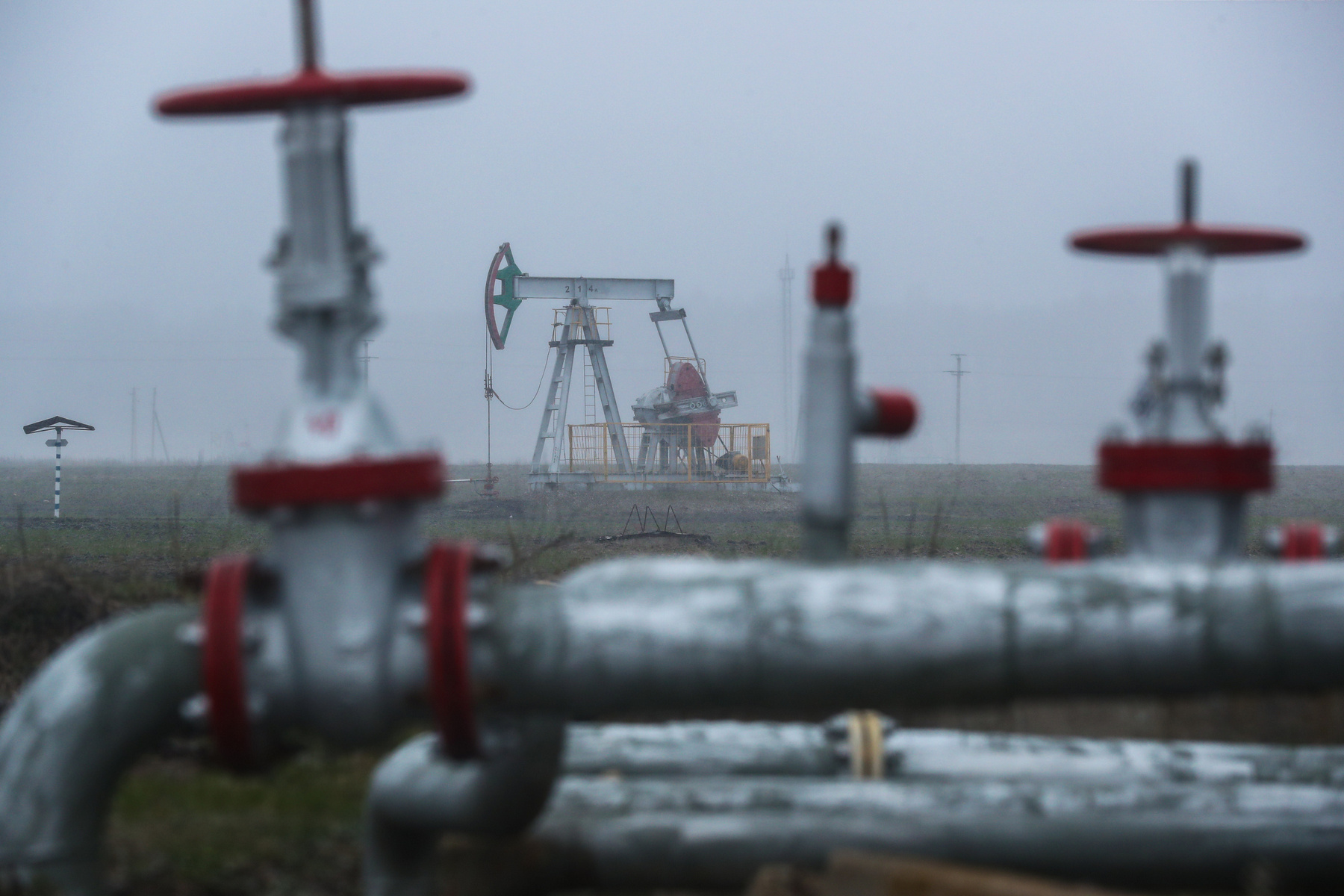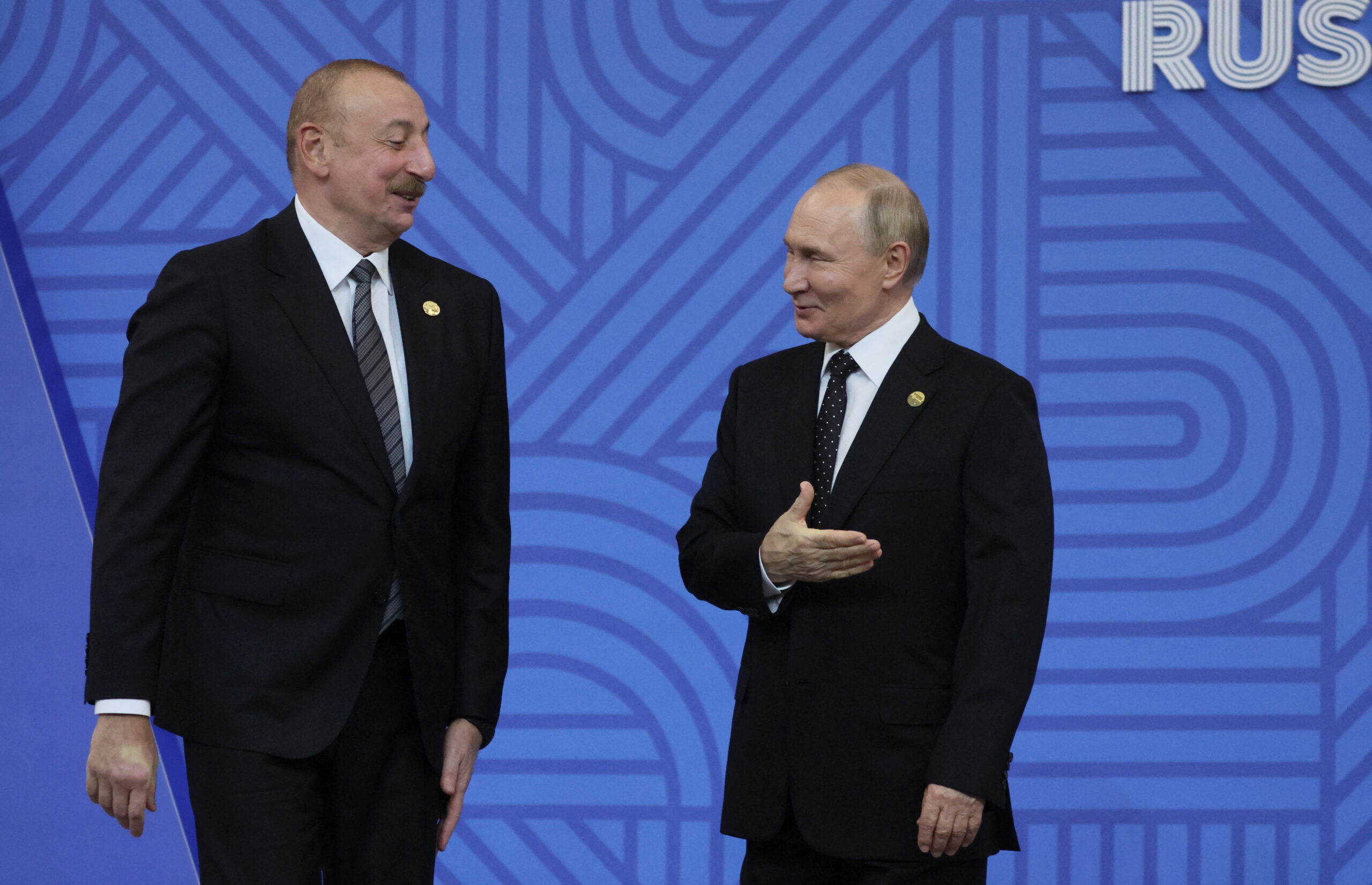Where America once had its shibboleth that what’s good for General Motors is good for the country, the same goes for Russia’s oil and gas sector. For decades now, the sector has been the crown jewel of Russian state revenues and a keystone for large parts of economic policy. As goes the oil price, so goes Russia’s business cycle.
The onset of the coronavirus pandemic, however, has sent that price into the doldrums, cracking open unprecedented concerns about energy demand. Since then, a specter of mass layoffs, wage cuts, lost spending power, and policy uncertainty has spooked the energy sector. Clearly, Russia’s oil and gas sector is on the brink. It needs support to halt declines in output, employment, and domestic consumption. But doing so without developing other potential exports will be costly and inefficient. Nor would it contribute much to long-run growth.
Collateral Damage
In late April, Putin met with cabinet members and the heads of Russia’s largest oil and gas companies. That was a clear signal the Kremlin was eyeing policies to prop up the oil and gas sector as part of any plan to “save” the economy. The operating assumption was that the market would begin to balance thanks to OPEC+ production cuts in the second half of this year, though prices would remain depressed due to glutted global inventories of oil.
But time is of the essence for any rescue package. Many wells shut now may never produce again; the highest risk wells account for 5-7% of production. That brings a painful aftershock to the agreement to cut 2.5 million bpd of production for May-June, and tapering back to 2 million bpd from there. Future inefficiency and costs are a concern. Russian firms’ opex costs are only about $3.10 per barrel and costs are more broadly managed through the ruble’s exchange rate. Still, a lack of access to western technology makes it costly to develop any newer fields needed to offset expected production losses. That matters more with MinEnergo expressing concerns about as much as a third of Russia’s production base becoming unprofitable to extract, leading to production declines before 2025. Marginal interruptions, lowered output, and higher servicing costs add up over time.
The current market troubles are only part of the problem for Russia’s gas exporters. Gazprom’s wounds, for instance, are largely self-inflicted. The company may have managed its position in Europe fairly well, but it’s reportedly wasted over $20 billion at the Chayanda field – the main supply source for the Power of Siberia pipeline – and might fail to meet its contractual obligations with China. Company managers have reportedly been hiding problems with engineering, leading to dry wells. Extra costs from supply contracts held by Arkady Rotenberg have also run up bills.
Novatek is in much better position, at least, bucking a trend of project deferrals and pushing ahead with LNG capacity expansions. Gas contractors are safer in general, given demand will keep growing. Gazprom’s shortcomings with China, however, could force Moscow to spend large sums on development with limited returns.
Worries over the effectiveness of support schemes stem from the oil and gas sector’s outsized role for Russia’s manufacturers. Current Rosstat figures show that oil and gas accounted for roughly 31% of the nation’s manufacturing output. Years of economic stagnation since the 2014-2015 have led to a relative decline in value-added production’s share of industrial output. This is all despite attempts to develop new supply chains within Russia, leaving it more dependent on extractive industries.
Production declines reduce orders for contractors and subcontractors. April’s industrial figures showed a 6.6% year-on-year contraction. The longer the cuts drag on with reduced spending, the more they weigh on real incomes already expected by official figures to decline 3.8% for 2020. The Higher School of Economics thinks the figure could be as high as 18%; other economists envision scenarios between 8-12%. With the consumer economy showing initial signs of recovery, finding a way to end continued declines for industrial output becomes a vital means of avoiding a general increase in household debt without wage growth as the central bank signals another significant key rate cut is possible. In effect, support schemes are an indirect jobs program to prop up consumer spending.
Gambling on Supply-side Economics
Russia’s participation in production cuts has helped stabilize crude prices at or above $35 a barrel. That said, it lacks the will, economic heft, and political relationships to coordinate demand-side responses with other countries. MinEnergo now sees supply and demand for oil balancing in June or July. But prices will remain depressed and much demand-side uncertainty remains.
Russian firms are hoping to begin easing production towards cuts at 1.5 million bpd, ostensibly until the market normalizes. Normalization, though, has no clear timeline. Moscow initially resisted calls from Saudi Arabia to extend the current cuts past June, but pivoted to look at extending them through September 1. Moscow and Riyadh have since agreed to a one month extension of current cuts to be reviewed each month, though Saudi Arabia will cease its additional voluntary cuts in July. Downward price pressure from escalating tensions between the US and China over Hong Kong’s protests and a stillborn trade deal dovetailed with higher than expected US products inventories. This forced Moscow’s hand.
In this context, any support scheme has a rocky road ahead of it. To see oil prices hovering around $35 a barrel as a cause for celebration speaks to the fragility of the economic recovery. Market sentiment has moved to bullish territory for crude prices. Brent climbed to around $40 a barrel before reality struck. US inventories rose past expectations and the reality of rising COVID infections spooked the market back down 8%. Refined fuels are expected to stay lower for longer as inventories are emptied. This is not an easy landscape.
The Cost of Recovery
Meanwhile, the trouble with extensive support for the oil and gas sector is two-fold. One, a growing number of indirect support schema to sustain output will eat into tax receipts. Two, price uncertainty. But oil is the main story in this regard.
In a survey of the oil sector, Deloitte estimated that as of 2018, 51% of Russian oil projects had tax breaks, primarily at depleted fields or for small projects. MinEnergo projects this share to rise to 68% by 2025. This is an issue both for fiscal stability and sector competitiveness.
Investment into geological exploration would need to increase to sustain reserve replacement from well depletions in West Siberia over a longer timeframe than the next few years. Under the current fiscal system, Vygon Consulting estimates that 45% of C2 probable and possible reserves – those not yet fully explored but initially prospected – could return a profit. Considering Russia’s estimated average recovery rate for oil projects is 28%, that means Russian companies at present would be able to recover just 12.6% of C2 reserves.
State support — whether that is cheaper credit, direct spending, or policy tweaks to tax codes — can sustain activity for the country’s existing production base. But unless Brent prices recover beyond $60 a barrel – a point at which investment into conventional and tight oil production elsewhere would rise – that would not produce growth.
Most potential production growth would come from the development of onshore Arctic projects, led by Rosneft’s Paiyakhi cluster. The Duma passed a bill providing 10 years of relief from Mineral Extraction Taxes (MET) for Rosneft’s role developing Paiyakhi in exchange for investment into social infrastructure. The irony, of course, is that the Kremlin had pushed through the tax maneuver to replace export duties on crude oil with a higher MET from which it offers more and more exemptions.
In effect, the state is now forced to provide stimulus support to maintain production levels; the quantity of the rent it collects from oil continues to decline as costs of new development are higher. Worst of all, the latest price crash will push competing oil majors abroad to focus on maximizing recovery rates at existing oil fields through innovation, a trend likely to push down prices next year.
The rent is too low
Any policy rollout to help the country’s oil and gas sector makes sense as a short-term move, but gloomy demand prospects are cause for concern. The IEA is projecting oil demand to resume its pre-COVID growth, but that could be a ploy to influence lawmakers. There is no particularly authoritative model to point to. Still, there are signs we are far closer to peak oil now than this time last year, given weaker emerging market growth prior to COVID anyway, the scale of the shock to the US economy since COVID, and a new focus on green energy and lighter industry in both Europe and China.
That said, supporting the oil and gas sector is an immediate necessity for the regime’s stability, as well as that of macroeconomic policy. But doing so without a plan to use resource rents to invest into other exporting sectors will not produce growth. At some point, Russia has to find a way to make use of its lower labor costs – Europe’s Green Deal will need imported components for green energy projects, for example. Until then, the Kremlin will be stuck providing life support to a sector in for long, hard times.










